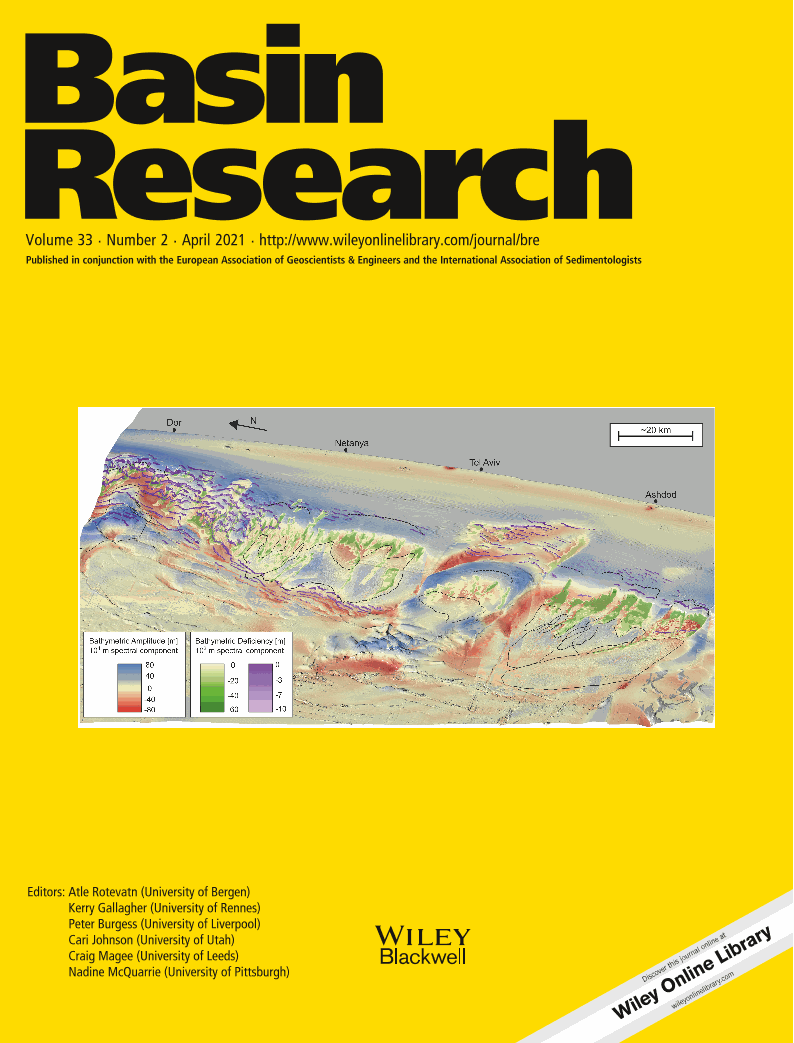
Full text loading...
 , Yuki Kobayashi1
, Yuki Kobayashi1 , Yasuhiko Araki1, Takafumi Ashida1, Takashi Taniwaki1
, Yasuhiko Araki1, Takafumi Ashida1, Takashi Taniwaki1
Schematic diagram showing the relationship between spatio‐temporal changes in the sedimentation rate and overpressure evolution in offshore Suriname.
This study investigates overpressure evolution and its relationship to the spatial and temporal changes in the sedimentation rate in the passive continental margin of offshore Suriname. We analysed well data to estimate pore pressure at the well locations and to interpret relevant overpressure‐generating mechanisms. Three‐dimensional basin modelling was performed to reconstruct overpressure evolution in the area. The well data indicated disequilibrium compaction as the main overpressure‐forming mechanism. The results of the modelling indicated a temporal variation in the sedimentation rate caused cycles of overpressure formation in the region. Periods of high sedimentation lead to overpressure formation, and this overpressure dissipates during periods of quiescent sedimentation. The latest overpressure development since the Middle–Late Miocene was triggered by a notable increase in the siliciclastic supply to the basin, which reflects the Andean uplift and reorganization of the drainage system. Spatial changes in the sedimentation rate resulted in a lateral variation in the amount of overpressure. Disequilibrium compaction generated large overpressure in the area with a high‐sedimentation rate because of the fast increasing rate of overburden load. In addition, the high‐temperature condition beneath the rapid sedimentation area could cause additional mechanisms for overpressure formation in the deeper part of the basin. This study reveals that the complex overpressure history and its lateral variation in offshore Suriname were mainly caused by a single controlling factor (i.e. the sedimentation rate). This article gives an insight into overpressure evolution in sedimentary basins by considering the perspective of the spatio‐temporal variation in the sedimentation rate and its connection with hinterland evolution.
]
Article metrics loading...

Full text loading...
References


Data & Media loading...

